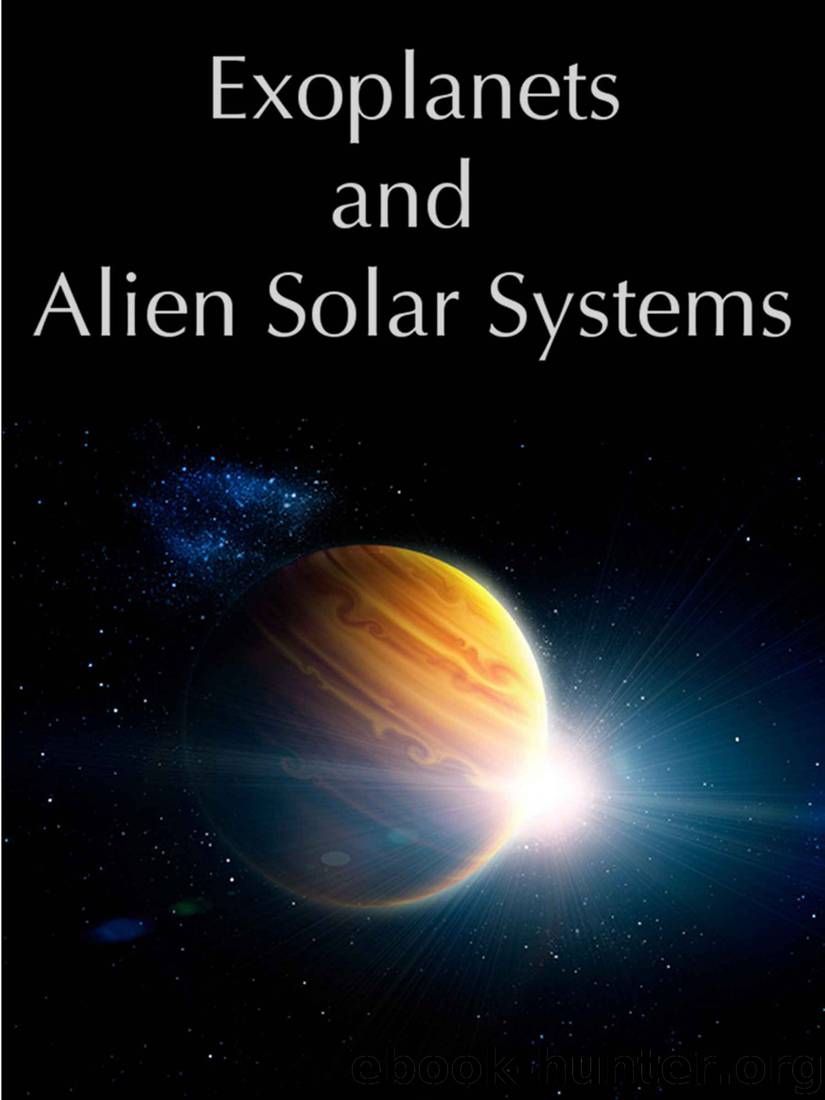Exoplanets and Alien Solar Systems by Tahir Yaqoob

Author:Tahir Yaqoob
Language: eng
Format: mobi, epub
Publisher: New Earth Labs (Education and Outreach)
Published: 2011-10-17T03:00:00+00:00
Exoplanet Eccentricities
Orbits are elliptical in shape because of the mathematical forms of Newton's laws of gravity and motion. Kepler's laws of planetary motion are simply applications of Newton's laws, which are very general. The eccentricity of an ellipse is a measure of how “squashed” the ellipse is compared to a circle, and has a value in the range 0 to 1. An eccentricity of 0 is a special case of an ellipse that is a circle. Higher and higher values of the eccentricity characterize more and more elongated ellipses. The eccentricity of the orbit of a planet is affected by several factors. The initial conditions during the formation of the planet will affect the eccentricity in complex ways. Impacts and collisions with other bodies can also affect the eccentricity. Also, gravitational tides, which cause stress and tension throughout the planet and affect its spin and orbital rotation, can cause an elliptical orbit to eventually become circular if the planet is very close to the host star.
All current planet-formation scenarios involve some sort of rotating disk around the host star, from which planets are formed (I will talk about this more later). The circular motion of the disk should give rise to planets that have zero or small eccentricities. What is actually found from the exoplanet sample of October 2011 is that a significant fraction of the exoplanets has an eccentricity that is not zero. The number of exoplanets in the October 2011 sample with an eccentricity greater than zero is 497. Of these, 361 (about 52%) have an eccentricity greater than 0.1, and 62 (about 9%) have an eccentricity greater than 0.5. Thus, there is a drop in numbers for eccentricities larger than 0.5. 8 There is a tentative suggestion that the median eccentricity for giant planets is higher than it is for lower mass planets. However, interpretation of the data requires caution. It is true that there are many more low-mass exoplanets that have eccentricities lower than 0.5 than there are low-mass exoplanets with eccentricities higher than 0.5, but the latter may be unfavorable for detection. Highly eccentric orbits require a higher frequency of “snapshots.” On the other hand, there is a definite lack of giant planets that have a mass greater than about 3 Jupiter masses (or about 1,000 Earth masses) and circular orbits. More specifically, a diagram showing eccentricity versus planet mass is essentially unpopulated above 3 Jupiter masses and below an eccentricity of 0.1. This cannot be explained by observational bias because planets with such large masses and circular orbits should actually be easier to detect than planets with small masses and large eccentricities.
In contrast to the population of exoplanets, most of our solar system planets have nearly circular orbits. Seven of the eight solar system planets have eccentricities less than 0.1, and the eccentricity for Mercury is about 0.20.
Download
Exoplanets and Alien Solar Systems by Tahir Yaqoob.epub
This site does not store any files on its server. We only index and link to content provided by other sites. Please contact the content providers to delete copyright contents if any and email us, we'll remove relevant links or contents immediately.
| Aeronautics & Astronautics | Astronomy |
| Astrophysics & Space Science | Comets, Meteors & Asteroids |
| Cosmology | Mars |
| Solar System | Star-Gazing |
| Telescopes | UFOs |
Tools of Titans by Timothy Ferriss(8218)
Turbulence by E. J. Noyes(7936)
Secrets of Antigravity Propulsion: Tesla, UFOs, and Classified Aerospace Technology by Ph.D. Paul A. Laviolette(5309)
Astrophysics for People in a Hurry by Neil DeGrasse Tyson(5130)
Room 212 by Kate Stewart(5035)
Design of Trajectory Optimization Approach for Space Maneuver Vehicle Skip Entry Problems by Runqi Chai & Al Savvaris & Antonios Tsourdos & Senchun Chai(5011)
Pale Blue Dot by Carl Sagan(4912)
The David Icke Guide to the Global Conspiracy (and how to end it) by David Icke(4625)
A Journey Through Divination and Astronomy by Publishing Pottermore(4344)
Goodbye Paradise(3726)
Apollo 8 by Jeffrey Kluger(3637)
COSMOS by Carl Sagan(3554)
Losing the Nobel Prize by Brian Keating(3498)
The Five People You Meet in Heaven by Mitch Albom(3474)
How to Read Water: Clues and Patterns from Puddles to the Sea (Natural Navigation) by Tristan Gooley(3406)
Brief Answers to the Big Questions by Stephen Hawking(3369)
How to Read Nature by Tristan Gooley(3249)
The Order of Time by Carlo Rovelli(3145)
A Brief History of Time by Stephen Hawking(2960)
